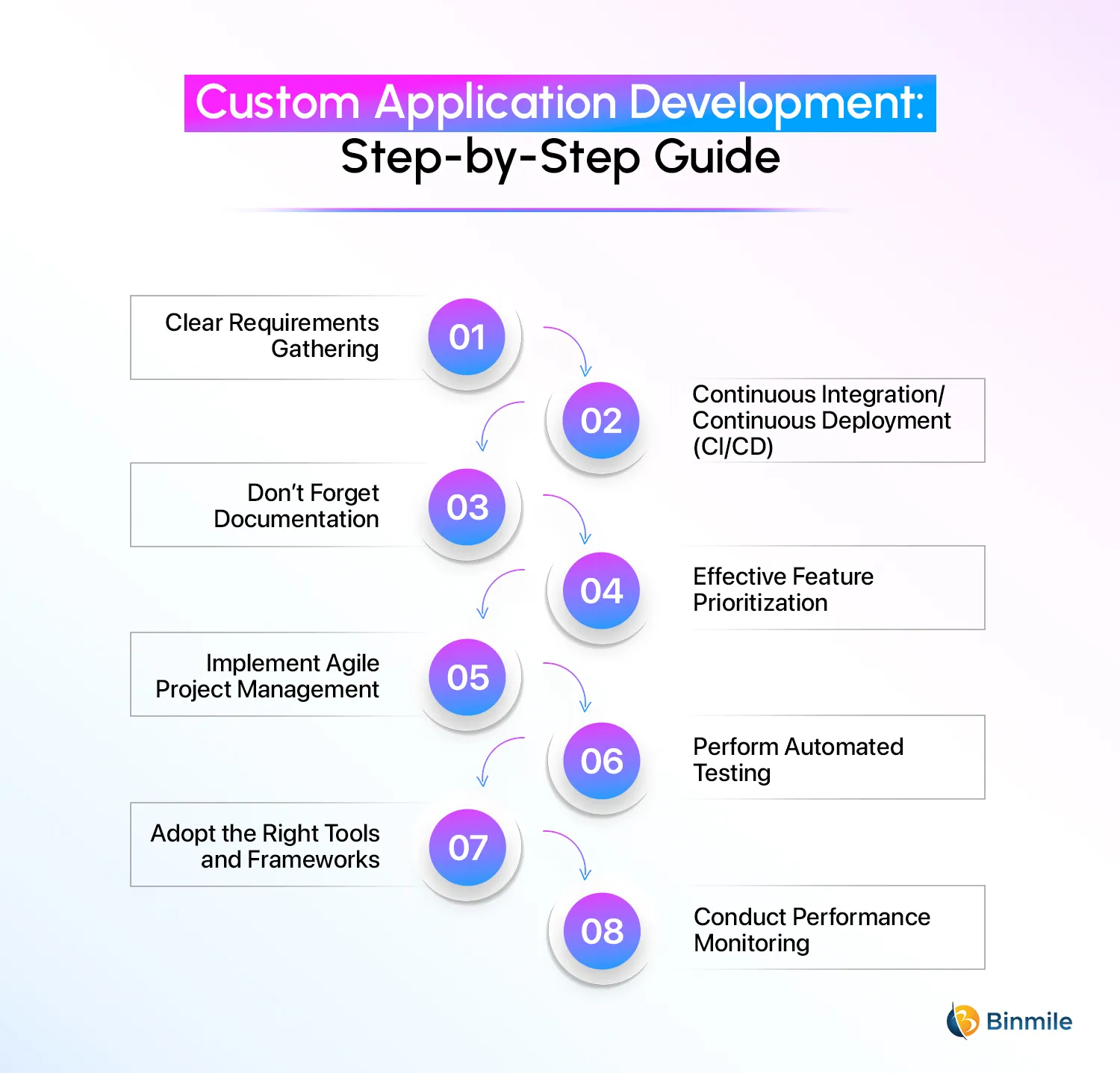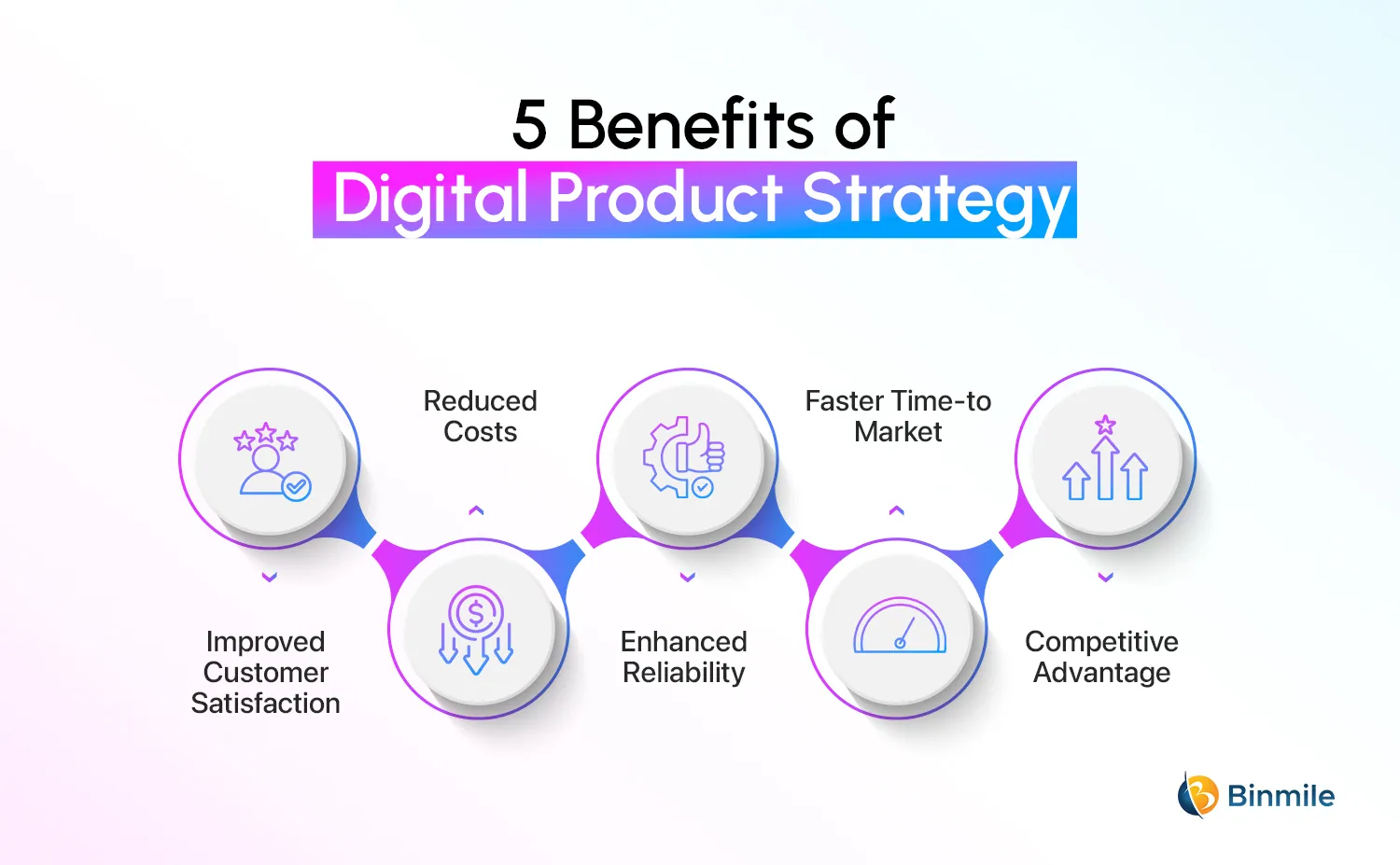- Agile project management
- android app performance optimization
- application development company
- digital product discovery
- digital product strategy
- phases of app development process
- step involved in App development
- Step-by-Step Custom Application Development Process
- Streamline Software Development
- What is custom application development?
All business owners are no strangers to the uphill battle of creating an application. It needs not only to be top-notch but also to meet user needs in a constantly evolving landscape. Besides, poor-quality applications can have some serious consequences for your brand’s credibility and ROI.
But what exactly defines quality in application development? And can it be improved? Application quality refers to the degree to which an application product meets specified requirements and user expectations. It encompasses various attributes, including reliability, functionality, usability, performance, and security.
Achieving high application quality is essential as it directly impacts user satisfaction, reduces maintenance costs, and contributes to the overall success of an application project. To help you on this journey, we have compiled a list of 8 tried-and-tested practices for custom application development that will enable you to make a top-notch application.
So let’s get started.
Custom Application Development: Step-by-Step Guide
An efficient application development process is paramount for delivering high-quality applications efficiently. When you utilize competent strategies, you gain reduced development cycles, fewer errors, enhanced team collaboration, and the delivery of high-quality applications that align with user expectations and business objectives. Here are 8 best practices for achieving this goal:

1. Clear Requirements Gathering
It involves investing time in collecting and documenting detailed project requirements. Using processes like digital product discovery can be crucial to identify and validate user needs and market opportunities before diving into development.
- Integrate user stories and acceptance criteria to target specifications of functionality and priorities.
- Identify project goals and desired outcomes.
- Create a detailed project plan with milestones and timelines.
- Communicate goals effectively to all stakeholders.
2. Don’t Forget Documentation
Up-to-date documentation, encompassing code comments, architecture diagrams, and user manuals, is vital. Documenting coding standards and guidelines ensures code consistency and aids in onboarding new team members.
- Document system architecture, APIs, and data models.
- Create user manuals and guides.
- Keep documentation up to date with changes.
- Use documentation tools and platforms for organization.
3. Implement Agile Project Management
Adopting Agile project management, such as Scrum or Kanban, is pivotal to streamlining the application development process. It ensures that the development team stays aligned with evolving requirements and swiftly responds to changes.
- Break the project into small tasks or user stories.
- Plan sprints with specific goals and tasks.
- Hold daily stand-up meetings to track progress.
- Conduct regular retrospectives for continuous improvement.
4. Adopt the Right Tools and Frameworks
Tools and Frameworks can improve your efficiency as they offer specific functionality or structure for your custom application development. You need to consider factors like project requirements, preferences, skills, and resources before choosing appropriate development tools or frameworks for the project.
- Assess project requirements, including the technology stack, scalability needs, and compatibility with existing systems.
- Research and identify tools, libraries, and frameworks relevant to your project.
- Explore custom application development services to offload certain functionalities like authentication, payment processing, or cloud services.
5. Continuous Integration/Continuous Deployment (CI/CD)
CI/CD pipelines with tools like Jenkins or GitLab CI automate the building and testing of code changes. Creating CI/CD pipelines ensures seamless integration of new code with the existing codebase and promptly identifies issues, facilitating rapid remediation.
- Instituting a code review process to focus on code security, quality, adherence to best practices, and bug identification.
- Configure automated builds, tests, and deployments.
- Ensure version control, for instance, Git, and code quality checks in the pipeline.
- Automate the deployment process to staging and production environments.
6. Effective Feature Prioritization
It enhances the quality of the application products by ensuring that critical functionalities receive attention first. In addition, it allows for thorough testing and refinement and facilitates timely delivery. As a result, the development process becomes more focused, efficient, and capable of producing higher-quality application products.
- Create a prioritization framework (e.g., MoSCoW or Kano model).
- Evaluate and rank features based on user value and project goals.
- Focus on developing high-priority features first.
- Continuously reevaluate and adjust priorities as needed.
7. Perform Automated Testing
Developing a comprehensive suite of testing, including unit, integration, and end-to-end tests, is crucial, or hiring a test automation services company will help. Employing automated testing frameworks and tools helps you validate code quality and promptly detect regressions.
- Identify test cases for unit, integration, and end-to-end testing.
- Implement automated test scripts using testing frameworks.
- Integrate automated tests into the CI/CD pipeline.
- Run tests automatically on code changes.
8. Conduct Performance Monitoring
Real-time performance monitoring is essential to identify bottlenecks and system issues. Employing performance profiling tools enables code optimization and ensures that the application can scale efficiently as usage grows.
- Set up monitoring tools like Prometheus or New Relic.
- Define performance metrics and alerts.
- Continuously monitor system performance.
- Analyze data to identify and address performance bottlenecks.
Ready to streamline your custom application development? Partner with us for expert solutions that deliver high-quality, scalable applications.
5 Do’s And Don’ts for Building a High-Quality Application:
| Do’s | Don’ts |
| Define Clear Requirements | Rush Development |
| Prioritize User Experience | Ignore User Feedback |
| Implement Comprehensive Testing | Neglect Security |
| Continuous Stakeholder Engagement | Overcomplicate Architecture |
| Plan for Scalability and Maintenance | Lack of Documentation |
Must-Have Tools for Effective Custom Application Development
We recommend you consider factors like ease of use, security, effective collaboration, and tools with open APIs before selecting the best tools that work for your project:
- Source code repository: Various platforms to manage and store source code. For example: Git, Assembla, CloudForce, TFS, Subversion.
- Build server: Tools and platforms for automating build processes, running tests, and managing dependencies. Such as SonarQube, Jenkins, Artifactory, Travis CI, Circle CI, Kubernetes, and Docker.
- Unit testing: Frameworks for writing and executing unit tests in various programming languages, like JUnit for Java and Jasmine for JavaScript. For example: JUnit, NUnit, RSpec, TestNG, Jasmine, and Mocha.
- Configuration management: Tools for automating configuration and management of servers and infrastructure. Such as Puppet, Ansible, Salt, and Chef.
- Test automation: Frameworks and tools for test automation, covering web, mobile, and desktop applications. For instance: Selenium, Appium, Watir, Ranorex, Cypress, and Espresso.
- Monitoring tools: Tools for monitoring and analyzing system and application performance.
Such as Splunk, Kibana, Graphite, and Crashlytics. - Virtual infrastructure: Cloud and virtualization platforms for creating and managing scalable and flexible IT infrastructures, like AWS, Azure, and VMware vCloud. Such as Amazon Web Services, Microsoft Azure Cloud, VMware vCloud
- Security testing tools: Tools for identifying security vulnerabilities and code quality issues during the development process. For example- Kiuwan, Coverity, Checkmarx, and open-source options like Brakeman and JSHint.
The 3 C’s of Software/Application Quality
In today’s fast-paced digital world, streamlined software development plays a pivotal role in any organization’s success. The key is delivering software quickly while maintaining high quality, something a custom application development service can help with. However, before you utilize the services, you must keep in mind the 3 C’s of quality to start a streamlined software or application development process:
- Correctness: It refers to the software’s ability to perform its intended functions accurately and without errors. It involves meeting the specified requirements and addressing edge cases.
- Consistency: It ensures that the software behaves predictably and uniformly across different situations and environments. It implies that the software’s behavior doesn’t vary unexpectedly.
- Completeness: It assesses whether the software fulfills all the requirements and user needs. It involves ensuring that no critical functionalities are missing or overlooked.
Partner with us to create a powerful mobile app tailored to your needs. Our comprehensive app development solutions cover design, development, and deployment for an exceptional user experience.
Key Advantages of Digital Product Strategy
Effective customer application development requires an efficient digital product strategy. The strategy provides numerous advantages for both development teams and end-users. Some of them are:
- Improved Customer Satisfaction: High-quality application meets user expectations, leading to increased customer satisfaction and loyalty.
- Reduced Costs: Detecting and fixing defects early in the development process is less expensive than addressing them in later stages or post-release. This reduces development and maintenance costs.
- Enhanced Reliability: Quality application is more reliable and less prone to crashes, errors, and unexpected behavior, improving the user experience.
- Faster Time-to-Market: It streamlines development processes, enabling quicker release cycles and faster delivery of features to users.
- Competitive Advantage: Organizations become more reliable, feature-rich, and user-friendly products, attracting more customers and business opportunities.
Ready to Improve the Application Development Process?
Application quality is crucial for delivering applications that meet user expectations and business objectives. It cannot be done without following some effective application quality measures to improve application quality. After all, making good quality applications is not a black-and-white affair but a constant ongoing process. As an application developer in a software development company, you should be willing to make multiple iterations and additional tweaks based on analysis and feedback gathered in the quality management process.
Therefore, fast and high-quality application development is achievable with the right practices in place. By emphasizing clear planning, collaboration, automation, and a commitment to ongoing improvement, you can deliver an application that not only meets deadlines but also exceeds user expectations and stands up to rigorous testing. So, remember these best practices in mind, and your application development projects will be well on their way to success!
Frequently Asked Questions
Custom application development refers to the process of designing, developing, and deploying software applications tailored to meet specific business needs. Unlike off-the-shelf software, customized application development ensures unique features, better scalability, and improved performance.
The cost of custom application development varies based on the project scope, features, and technology stack. Simple apps may cost a few thousand dollars, whereas enterprise-grade solutions can range significantly higher.
Security is a top priority in customized application development. Developers implement best practices such as encryption, authentication, and regular security audits to protect data and prevent cyber threats.











